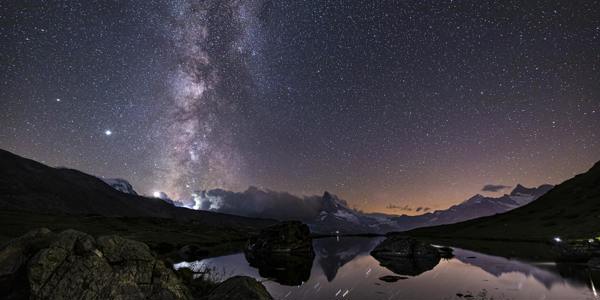
Blog
Seven extraordinary dark skies to explore this Spring
06/02/2025
In 2024, we were fortunate to have witnessed a series of extraordinary astronomical events – some considered once-in-a-lifetime experiences. From the Northern Lights to the 'Devil Comet', meteor showers and Supermoons, 2024 was an exceptional year for our night's skies.
After-dark tourism – coined 'noctourism' is predicted to be one of the biggest travel trends 2025. Looking at the data from a Google search perspective, we can't help but agree with this prediction, as monthly searches for the term 'Northern Lights' alone exceed 2.2 million. While destinations such as Norway, Canada and Iceland have been firm favourites for travellers seeking the Northern Lights and stargazing activities, here in the UK, we are privileged to host some of the darkest skies in the world. As Spring marks the last optimal season of the year to witness celestial events, our travel expert, Mike Wilmot has curated a list of the best stargazing destinations across the UK.
Northumberland National Park and Kielder Water & Forest Park, Northumberland
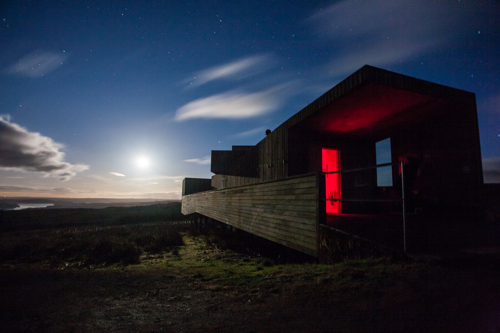
International Dark Sky Park – Gold Tier
One of the darkest areas in England due to low levels of light pollution, Northumberland National Park and its partners, Kielder Water & Forest Park, have been awarded as a gold-tier international dark sky park – the first of its kind in 2013. The area spans 580 square miles and is the world's third-largest protected dark sky reserve and the largest dark sky park in the UK.
Due to its pristine dark skies, you can often see the Milky Way and even the Andromeda Galaxy on clear nights without the need for telescopes. If you would like an expert to guide you through the skies with professional equipment, why not take a trip to Kielder Observatory? Nestled in the Kielder Water & Forest Park, Kielder Observatory is an astronomical observatory that holds upwards of 40 monthly events for the public. I recommend booking in advance, though, as their events can be rather popular.
Key dates for your calendar
20th March – Spring Equinox
22nd April - Lyrid meteor shower peak
23rd May - Approximate start of the Northern Hemisphere's noctilucent cloud season
Exmoor National Park, North Devon
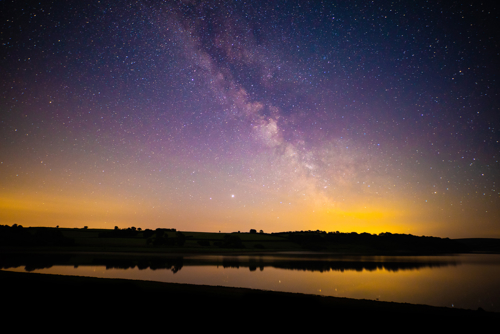
International Dark Sky Reserve
Exmoor National Park enjoys some of the darkest skies across the UK and is relatively easy to access from urban hubs. Designated an international dark sky reserve in 2011, Exmoor is home to Bronze Age burial grounds and the deserted medieval settlement of Hoccombe Combe.
If you visit the park on a clear night, by the human eye, you may only see around 3,000 stars – however, there are an estimated 100,000,000,000 in our galaxy alone. Make sure to wrap up warm and check the weather before you plan your trip to Exmoor, as you'll want to time your arrival around an hour and a half after sunset, so the sky is completely dark. It's worth planning your trip around the full Moon, too. Although the Moon is beautiful, the best time for stargazing is when it isn't in the sky, as its light can affect visibility.
Key dates for your calendar
14th March – Total lunar eclipse (sets during totality from the UK)
15th April - The Whirlpool Galaxy is well-placed
20th May – Moon at the last quarter
Brecon Beacons National Park, Wales
![]()
International Dark Sky Reserve
Bannau Brycheiniog National Park (Brecon Beacons) is in South Wales where sheep outnumber people 30 to 1. A haven for stargazers, the park and surrounding community have gone to great lengths to replace lighting to ensure the night sky is as easy to observe as possible, preserving it for future generations.
On a clear night, you can see the Milky Way, major constellations, vivid nebulas and even meteor showers. When planning your trip, be aware that much of the park is privately owned, and in some places, footpaths are close to people's homes.
Key dates for your calendar
29th March – partial solar eclipse
16th April - Callisto appears to almost touch Jupiter's southern pole
2nd May - Vesta reaches opposition, potentially visible from the naked eye during the evening
South Downs National Park, South Downs
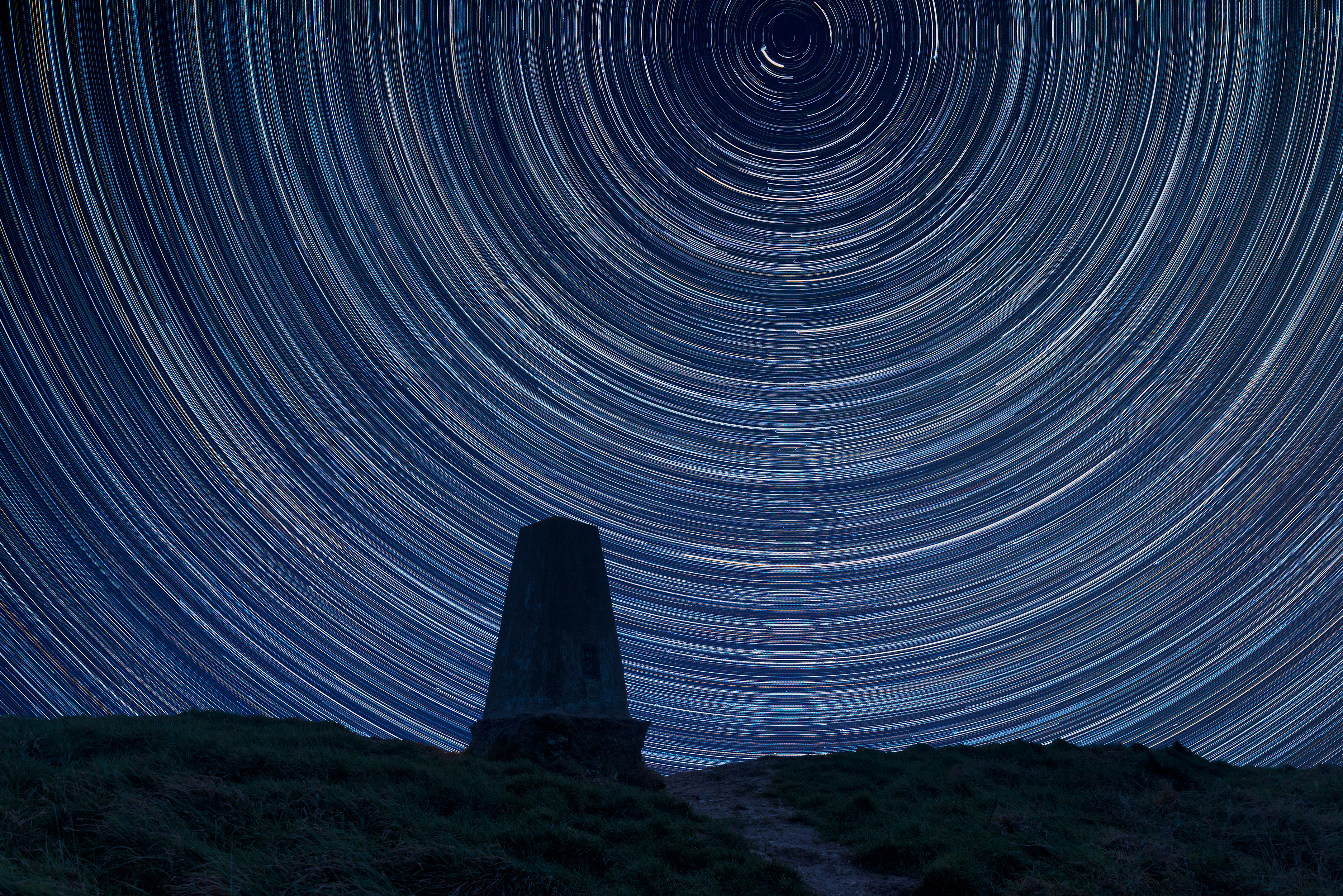
International Dark Sky Reserve
The world's international dark sky reserve, South Downs National Park, was appointed this accolade in 2016. The park spans over 1,600 square kilometres and is home to rare wildlife and historic woodland.
Located in Winchester, the Winchester Science Centre & Planetarium Dark Sky Discovery Site is well worth a visit. The planetarium hosts numerous science exhibits and is equipped with a state-of-the-art full dome projection system where you can explore the skies above.
Key dates for your calendar
4th March - Double shadow transit on Jupiter
1st April - The Moon occults the Pleiades open cluster, during the evening
4th May – Mars near the beehive cluster, during the evening
Eryri National Park (Snowdonia), Wales
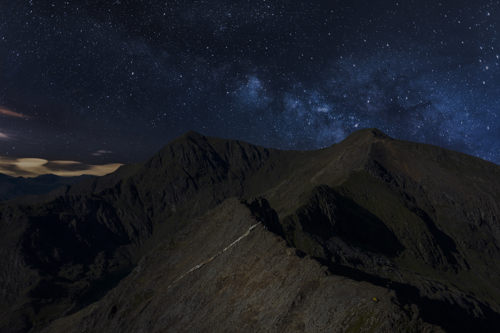
International Dark Sky Reserve
Eyri National Park (Snowdonia) is the first UK National Park named in Wales. The park stretches across more than 2,100 square kilometres, some 10% of the total land area of Wales.
Designated as an international dark sky reserve in 2015, the park's vast expanse of undisturbed landscape is one of its truly unique qualities, which sees little or no light pollution.
On a clear night, you'll see many incredible major constellations, including Orion, Seven Sisters, The Plough and The North Star. When visiting, ensure you only use artificial lights when you need to, and if you can, face the light towards the ground so you can cause minimal disruption to the local wildlife.
Key dates for your calendar
6th March - Lunar X clair-obscur effect visible on the Moon
22nd April - Lyrid meteor shower peak
15th May - Unusual daylight transit of Titan shadow across Saturn
North York Moors National Park, Yorkshire
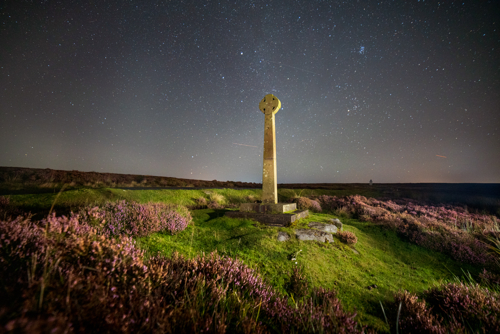
International Dark Sky Reserve
Known as a stargazer's paradise, the North York Moors National Park became a national park in 1952 and was designated international dark sky status in 2020. The park offers some of the darkest skies in the country, and lucky stargazers may spot the Northern Lights when conditions are right.
Home to the Dark Skies Festival, in 2025, the festival will celebrate its 10th anniversary. In partnership with the Yorkshire Dales National Park, the Dark Skies Festival will host its biggest event yet, taking place from 14th February – 2nd March.
Key dates for your calendar
8th March - Mercury at Greatest Eastern Elongation
8th April - Jewelled Handle clair-obscur effect visible on the Moon from the early morning
6th & 7th May - Eta Aquarids Meteor Shower
Yorkshire Dales National Park, Yorkshire
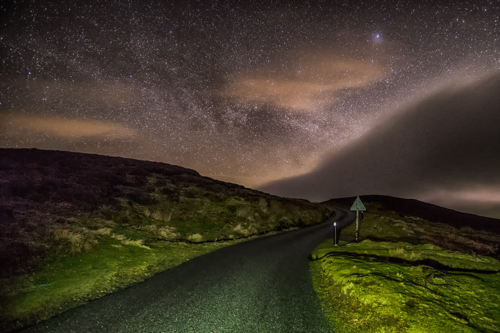
International Dark Sky Reserve
Designated an international sky reserve in 2020, the Yorkshire Dales was granted national park status back in 1954 due to its natural beauty, diverse wildlife and rich cultural heritage.
Spring is the best time of the year to spot planets, so make sure to keep an eye out. Patience is key when observing the universe, as your eyes will need to adjust to the darkness. When they do, you can see more in the night sky.
Key dates for your calendar
13th March – Full Moon
30th April - Lunar occultation of Beta Tauri
22nd May - Close approach of the Moon and Saturn
We spoke to Wil Cheung, an expert astrophotographer about how best to take photos of our galaxy from earth.
Light Pollution Levels
When it comes to stargazing, we want to be in locations with minimal light pollution, as with astrophotography, the impact of artificial lights is even greater. Using websites like lightpollutionmap.info will help you identify the best locations to set up. Consider what you are wanting to capture and make sure there isn’t a town or city over that part of the sky.
Moon Phase
One of the common mistakes I see often made is expecting dark skies, just because it is a clear night. You need to fact in the Moon phase, as a bright Moon will massively impact your night photography. When there is a full Moon nowhere in the world has dark skies. Plan your night photography sessions around New Moon or even better check the Moon set and Moon rise times to ensure you have the darkest skies.
Setting up
To maximise the quality of your photos - whether taken with a phone or camera, you need to invest in a tripod. With night photography, the biggest difference compared to taking photos during the day is long exposures. As night photography by definition means you have less light, your camera sensor needs to be ‘open’ for longer, and hand holding a camera for a few seconds means the image will be blurry due to small movements. A tripod ensures your camera is still for the multi second exposure. Latest phone cameras have built in software to compensate for minor movements, however using a tripod for phones will greatly increase your options. Without a tripod, your only option is resting your phone or camera against something on the ground which isn’t ideal.
Phone cameras
With newer models of Apple phones, at night if you ensure your flash is switched off, your phone will automatically engage night mode, and a small yellow icon at the top left will appear. Simply hold your phone steady, or on a tripod and press the shutter button, and a message should come up saying hold still, usually for 3 seconds - this is the exposure time. With Android phones, there will be a menu option at the bottom ‘more’. Click on it and then select night, use a tripod or hold still and it will take a multi second photo for you. If night option isn’t there, then click pro and follow the same instructions as using a DSLR.
DSLR
Attach your camera onto a tripod, turn your camera to Manual mode AND Manual Focus. Using Live view on the back of the camera to find a bright star and turn the focusing ring to ensure the object is small and pinpoint sharp. Adjust your exposure settings to ensure your camera can capture the stars. Sample settings to get started, depending on local light conditions, ISO 2000, Shutter speed 10 seconds, and Aperture as wide as it can go usually F2.8. Take test shots and adjust your shutting speed and ISO accordingly but be careful of exposures being too long as you can end up with star trails usually no more than 20 seconds depending on your lens.
Wil Cheung is a photographer with a passion for night skies and the aurora. He’s based at Northumberland Dark Sky Park, where he hosts stargazing and astrophotography workshops. He also runs tours on cruise ships chasing the aurora and photographing wildlife. You can follow Wil on Facebook and Instagram.
When planning your trip to one of these dark skies destinations, you'll want to ensure you stay somewhere comfortable. Whether you're looking for a caravan, holiday lodge or glamping pod, our holiday accommodation has you covered.
Get in touch
Our friendly team are waiting to hear from you. Check out our office hours
